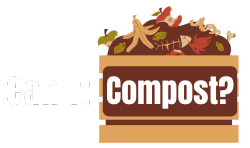Can I Compost Diapers?
Diapers are compostable only under very specific circumstances, primarily due to the high risk of pathogen transmission.


Sourced & Cited
Composting diapers is a complex issue, as they contain human waste which can harbor harmful bacteria and viruses. While some diaper types are more biodegradable than others, successful composting requires meticulous attention to safety and proper methods. Not all home compost setups are suitable.
Compost Classification
Green (Nitrogen-rich): The absorbent material in most diapers is cellulose-based, making it a nitrogen-rich component similar to paper towels or cardboard; however, the high moisture content of the waste within makes it more analogous to fresh grass clippings. Brown (Carbon-rich): The small amount of non-absorbent material in some diapers may contribute a small carbon component, though this will vary greatly.
🏷️ Tags
Important characteristics to know about this item:
Breaks Down Slowly Use in Moderation Pest Attraction Risk Odor Risk May Contain Synthetics
⚠️ Potential Risks
- Potential pathogen transmission (bacteria, viruses, parasites)
- Attraction of pests, including rodents and insects
- Unpleasant odors during decomposition
- Incomplete decomposition due to potential presence of plastic or non-biodegradable components
- The resulting compost should not be used for food crops.
💡 Best Practices
- Use only cloth diapers or those specifically designed and marketed for composting.
- Ensure your compost reaches and maintains a minimum temperature of 130°F (54°C) for several weeks to kill pathogens; hot composting is mandatory.
- Bury diapers deeply within the compost pile to minimize odor and pest attraction.
- Mix diapers with a large quantity of carbon-rich materials (dry leaves, sawdust) in a ratio of 1:10 or even greater.
- Monitor the compost heap closely for odors or pest activity.
- Never use the resulting compost on food crops.
